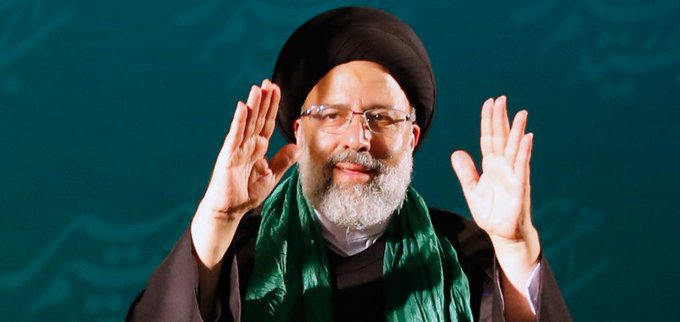THE SHAM ELECTIONS IN IRAN

THE SHAM ELECTIONS IN IRAN
The presidential elections scheduled for 18th June in Iran will, as usual, be a sham. This time they may be a bigger deception than ever before. After 8 years of Hassan Rouhani as president, 80 million Iranians are sick of him, sick of Supreme Leader Ali Khamenei and sick of the theocratic dictatorship that has wrecked their lives, ruined the economy, forced the majority of the population into abject poverty and turned Iran into an international pariah.
The likelihood is that turnout at the election will be very low. Mojahedin-e Khalq (MEK) resistance units inside Iran report that protesters who are taking to the streets on a daily basis in nationwide protests are shouting slogans to confirm that they will boycott the vote. Turnout could be below 20%. But even if it is, the regime will announce fake figures, in a bid to conceal their unpopularity. We know from bitter past experience that the clerical regime’s elections always involve intimidation, vote-buying, outright ballot-box stuffing and unbridled fakery. Iranians recognize that the presidential elections in Iran are nothing more than reshuffles amongst the ruling elite and that Khamenei, wields absolute power in the country. That is why Rouhani was allowed to become president. Rouhani has been part of the Iranian political establishment for decades. Back in 2013, he emerged from a list of 8 handpicked candidates, who were variously advisers, aides, or representatives of the Supreme Leader.
The Guardian Council, which has the final say in who the candidates shall be, is an unelected body comprised of 6 clerics, who are ardently loyal to the Supreme Leader and are handpicked by him, and 6 jurists, who are appointed by the Head of the Judiciary, who is himself appointed by Khamenei. So, the Guardian Council is simply a mouthpiece for the Supreme Leader. His candidates will be the only ones accepted and he will nominate a favourite who will be sure to win the election. Ballot boxes and votes are an irrelevance, there only to provide a thin semblance of democracy to the gullible outside world.
The rules are clear. Accepted candidates must be male. No women are allowed to stand for election. They must be Shi’ia Moslem and faithful believers in the system of Velayat-e Faqih, or the absolute rule of the clerics. This thin veneer of righteousness has been used from the early days of the revolution to maintain the pretence of legitimacy embedded in its constitutional religious mandate, its sole excuse for denying political rights to the population and for fooling the West into believing they are dealing with people of high moral and religious principles. Nothing could be further from the truth. The Iranian people recognise that Tehran’s clerical leadership has had to rely heavily on coercion, repression, and lethal force in managing its domestic and international affairs. Its external aggression and internal brutality underline its determination to stave off threats to the regime.
The mullahs try to fool the West into believing that there is an on-going struggle between ‘moderate’ reformists, like Rouhani and aggressive hardliners like Ahmadinejad. Western media have fallen for this subterfuge again and again. But the Iranian people know the truth. In daily street protests they can be heard chanting “Reformists and Hardliners the game is over,” because they know that all of the mullahs are the same. They are all venally corrupt criminals who are clinging to power by their fingernails, relying on the brutality of the IRGC, the regime’s Gestapo, to crush dissent. There are no reformists. It is the hardliners who rule and it will be a hardliner, handpicked by Khamenei, who becomes the next president. Indeed, the leading candidate who is known to be favoured by the Supreme Leader is Ebrahim Raisi. Khamenei regards Raisi as “young and pious.” At 60 years of age, he is considered “young’ amongst the geriatric, bearded tyrants who rule Iran.
Raisi is a notorious murderer. He stood for election against Rouhani in 2017, when he was exposed as a member of the ‘Death Commission’ appointed by Ayatollah Khomeini in 1988, to massacre over 30,000 political prisoners, mostly supporters of the MEK opposition movement. For his work as a ruthless executioner, Raisi was promoted to the position of Tehran Prosecutor in 1989. He held that position for five years. In 2012 he became Deputy Head of the Judiciary. Khamenei appointed Raisi the Judiciary Chief in March 2019. Since then, he has directed the execution of 251 people in 2019, and 267 people in 2020, and scores of executions in 2021.
Despite being listed as an international terrorist in the US and EU, Raisi has emerged as the frontrunner to become Iran’s next president in the sham elections. If he does so, the US, UN, EU and UK can no longer take the theocratic regime seriously. No longer can Western politicians look at a revived JCPOA nuclear arrangement as a potential springboard to détente, rapprochement, and a more normal bilateral relationship. Iran has, through its hostile acts, repeatedly dashed such hopes and forfeited the ability to market a new agreement as anything more than a transaction, wholly based on verification of its clandestine nuclear activities, rather than based on trust. If Raisi becomes president it will be the straw that breaks the camel’s back.
Tehran’s clerical leadership has relied so heavily on coercion, repression, and lethal force in managing its domestic and international affairs, that Western appeasers who have sought to restore normal relations with the mullahs no longer have any credibility. The presidential elections on 18th June will be the last, desperate throw of the dice for a bankrupt, toxic and dangerous regime, hated by their own population and distrusted by the international community. With their downfall imminent, Iran’s next president will certainly be the clerical regime’s last.
